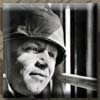 |
 |
 |
 |
 |
| Menu: |
| Home |
| Store |
| Buying |
| X-Sales |
| Info |
| FAQ's |
| Contact |
| Links |
Terms &
Conditions I Privacy
& Copyright Policy I Copyright © www.Fallschirmjager.Biz
|
|||||||||||||||
|
Information:
Badges & Awards: Nahkampfspange
- Close Combat Clasp
|
||||||||||||||
Terms &
Conditions I Privacy
& Copyright Policy I Copyright © www.Fallschirmjager.Biz |
|||||||||||||||